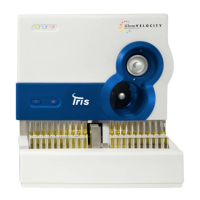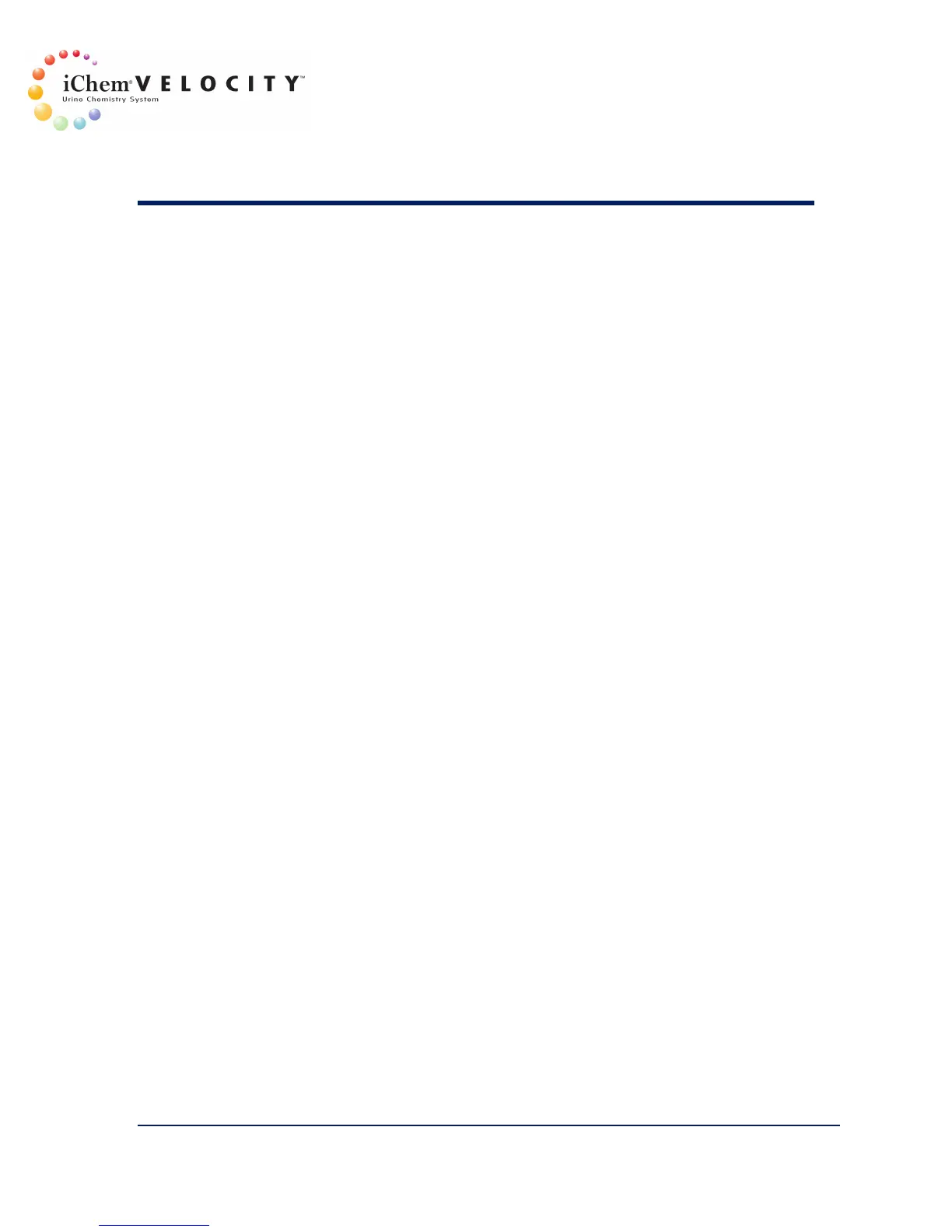11 Appendix
301-7146 English Rev B 11/02/2011 Operator’s Manual NA 227
medications that have an intrinsic red color in acidic medium such as
red beets, azo dyes, phenazopyridine and p-aminobenzoic acid may
produce false positive results. Prolonged exposure to light may lead to
diminished or false negative values.
Ketones
This test is based on Legal’s method in which the test pad contains
sodium nitroprusside and glycine in an alkaline medium. A violet color
proportional to methylketone is generated.
• Expected Values: Detectable amounts of ketone do not appear in
the urine of normal specimen. Positive ketone values may result from
the following conditions: starvation, dietary imbalance, diabetes
mellitus, eclampsia, insulin dosage monitoring, vomiting and other
metabolic disorders.
• Sensitivity: 3 mg/dL ketone
• Performance Characteristics: The test does not measure β-
hydroxybutyric acid and is only slightly sensitive to acetone.
• Limitations: Elevated concentrations of phenylpyruvic acid may
interfere with the test pad and produce a variety of colors. Phthaleins
and anthraquinone derivatives exhibit a red color in alkaline medium
and this may mask the response. Large amounts of levodopa and
medications containing sulfhydryl groups may produce atypical color
reactions10. MESNA may produce false positive results.
Ascorbic Acid
This test is based on Tillman’s reaction in which the presence of ascorbic
acid leads to the decolorization of the test pad from gray-blue to orange.
• Expected values: Ascorbic acid is found in various food supplies
and dietary supplements. Concentrations of ascorbic acid greater than
20 mg/dL can be expected to cause strong interference with glucose,
blood and nitrite.
• Sensitivity: 17 mg/dL ascorbic acid
• Performance Characteristics: The oxidized form, dehydroascorbic
acid, does not react with this test pad.
• Limitations: Samples at a pH of 9.0 may interfere with the test.
MESNA may produce false positive results.
Glucose
This two-step enzymatic reaction uses glucose oxidase, peroxidase and a
chromogen. Glucose oxidase catalyzes the formation of gluconic acid and

